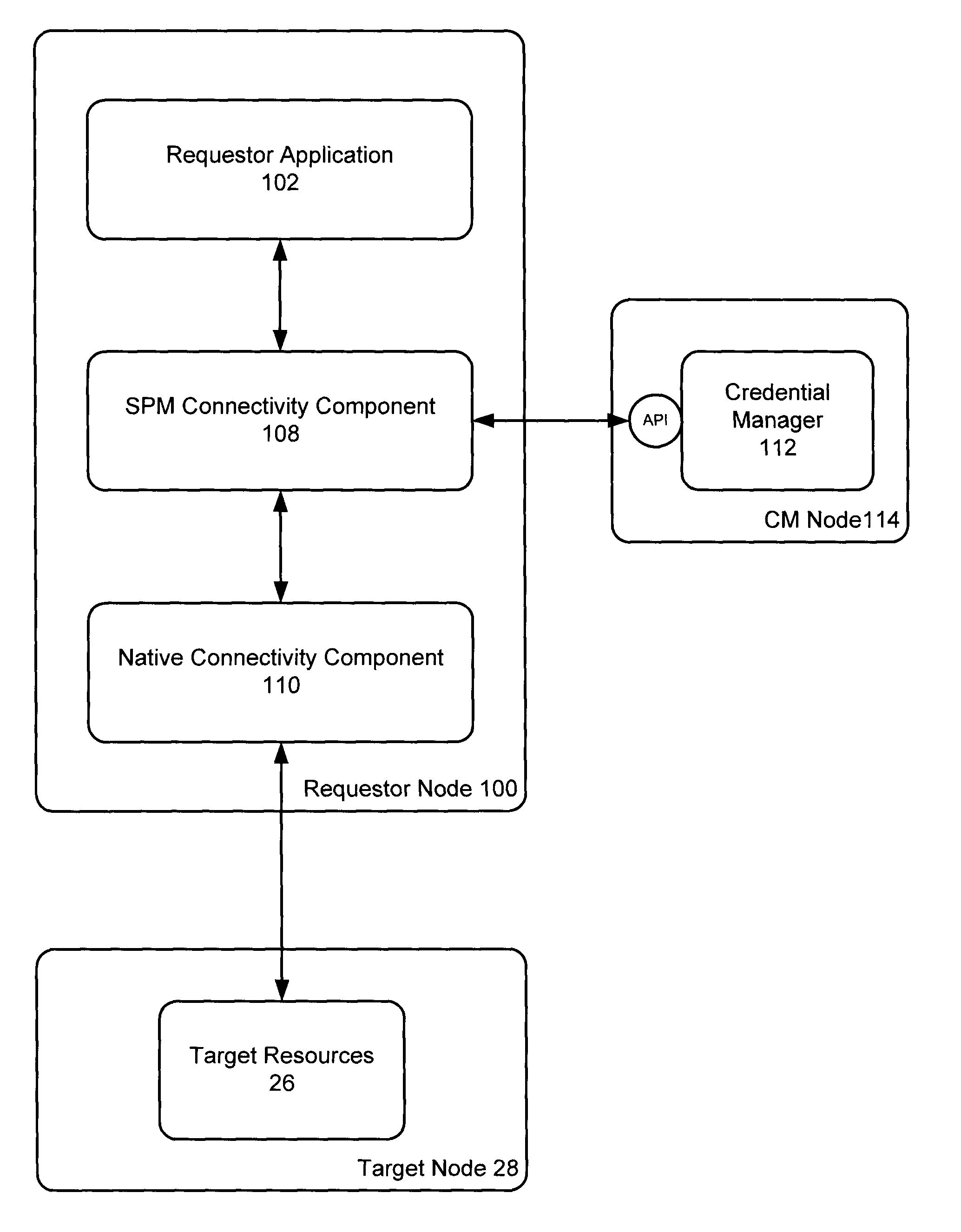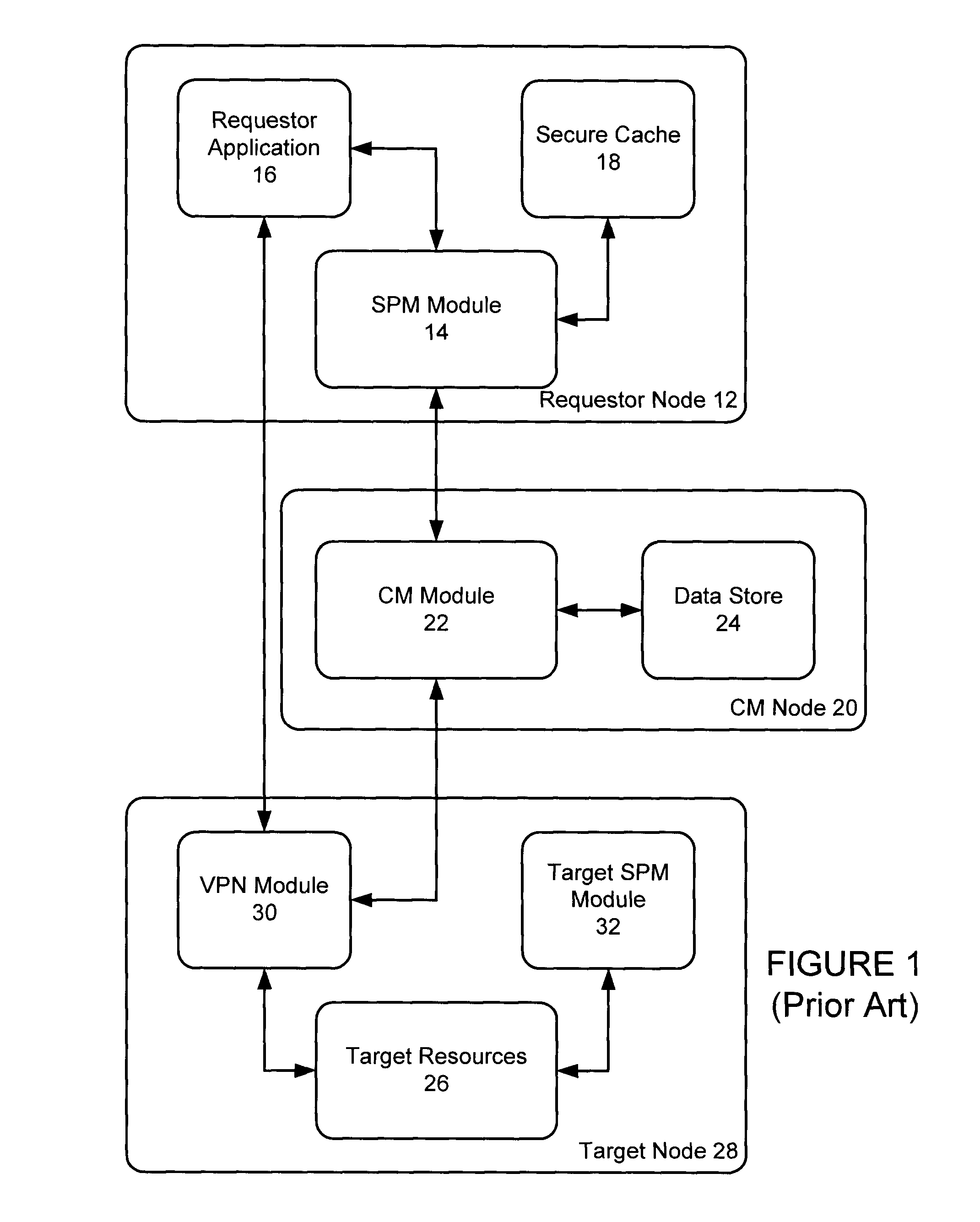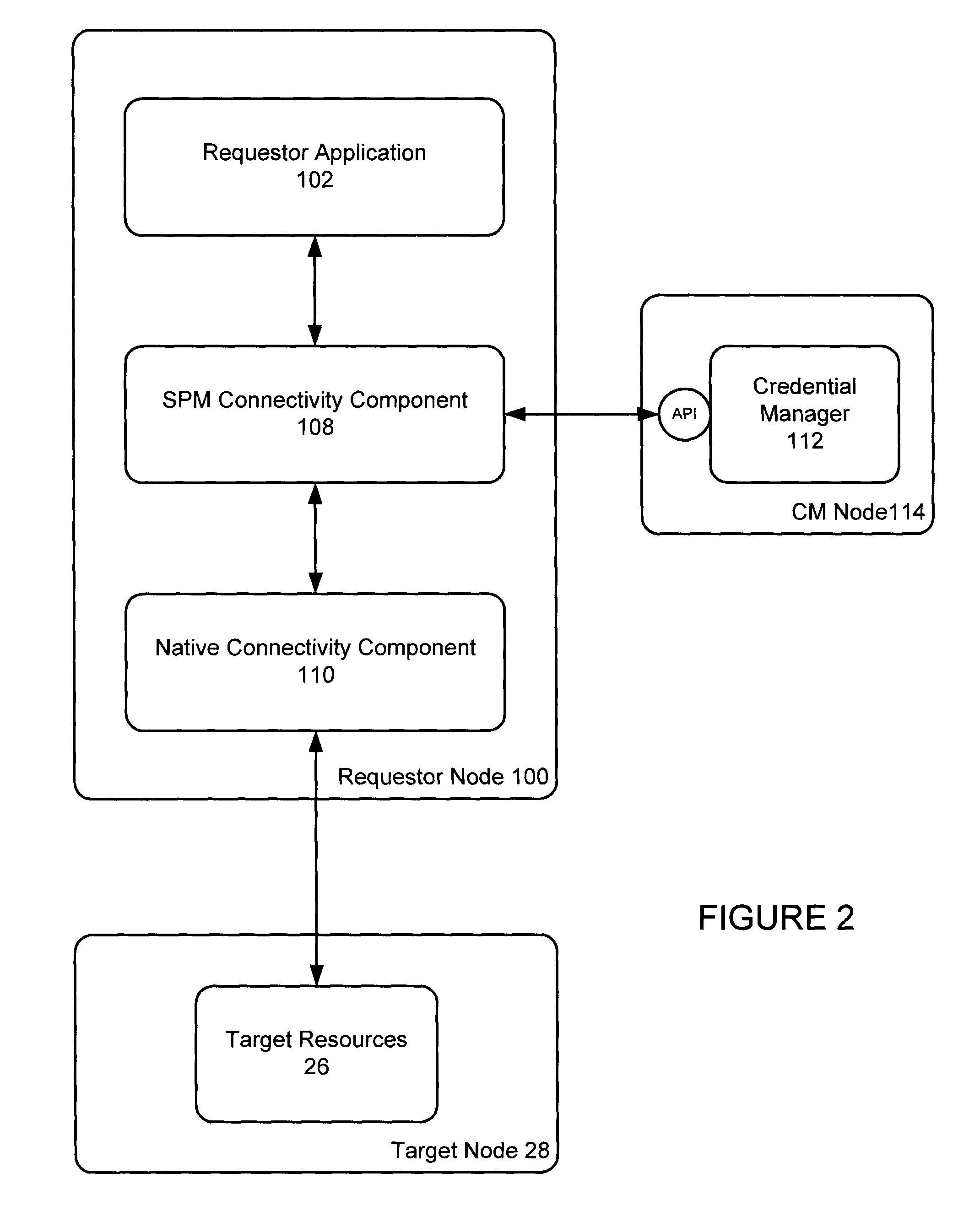Authenticated database connectivity for unattended applications
a database and database technology, applied in the field of credential management methods and systems, can solve problems such as long validity periods, increased computer security concerns of attendees, and difficult distribution of passwords to developers,
- Summary
- Abstract
- Description
- Claims
- Application Information
AI Technical Summary
Benefits of technology
Problems solved by technology
Method used
Image
Examples
Embodiment Construction
[0022]FIG. 1 illustrates a prior art system 10 for credential management, as described in U.S. application Ser. No. 11 / 640,371 (U.S. Publication No. 2008 / 0148373), entitled “Simplified Management of Authentication Credentials for Unattended Applications,” the contents of which are incorporated herein by reference in their entirety. A requestor node 12 has resident on it a server password manager (SPM) module 14, a requestor application 16 and, optionally, a secure cache module 18. The requestor node 12 communicates with a credential manager (CM) node 20 that implements a password authority system. The CM node 20 has resident on it a CM module 22 and a data store module 24. The requestor node 12 communicates with the CM node 20 to request access to resources 26 on target node 28. A VPN (virtual private network) module 30 may optionally be resident on the target node 28 to govern communications with either or both the CM node 20 and the requestor node 12.
[0023]The requestor node 12, t...
PUM
 Login to View More
Login to View More Abstract
Description
Claims
Application Information
 Login to View More
Login to View More - R&D
- Intellectual Property
- Life Sciences
- Materials
- Tech Scout
- Unparalleled Data Quality
- Higher Quality Content
- 60% Fewer Hallucinations
Browse by: Latest US Patents, China's latest patents, Technical Efficacy Thesaurus, Application Domain, Technology Topic, Popular Technical Reports.
© 2025 PatSnap. All rights reserved.Legal|Privacy policy|Modern Slavery Act Transparency Statement|Sitemap|About US| Contact US: help@patsnap.com



